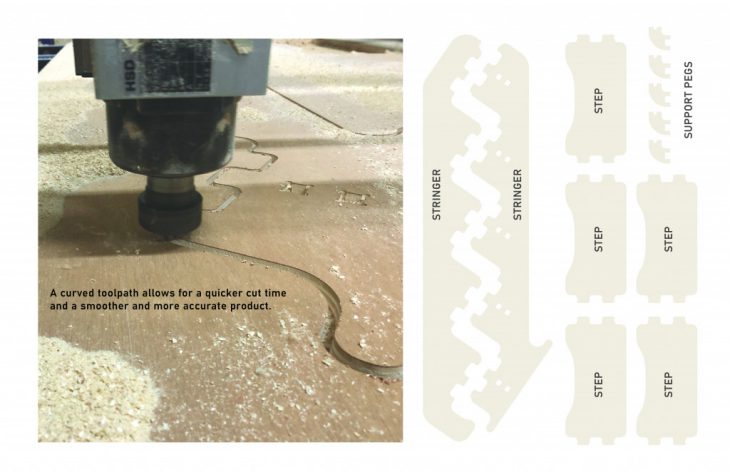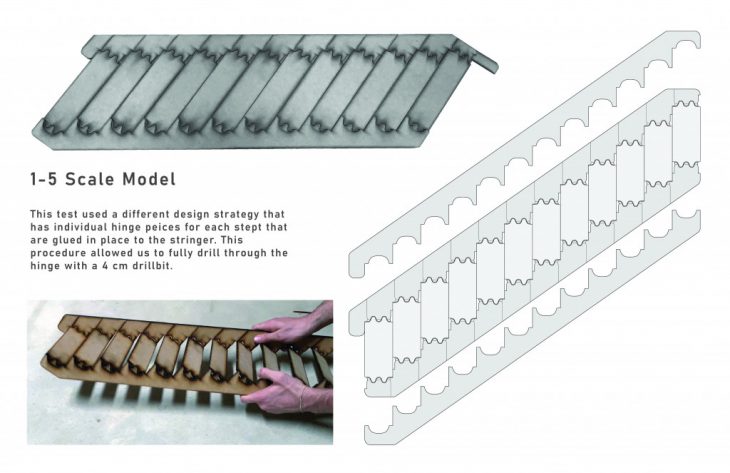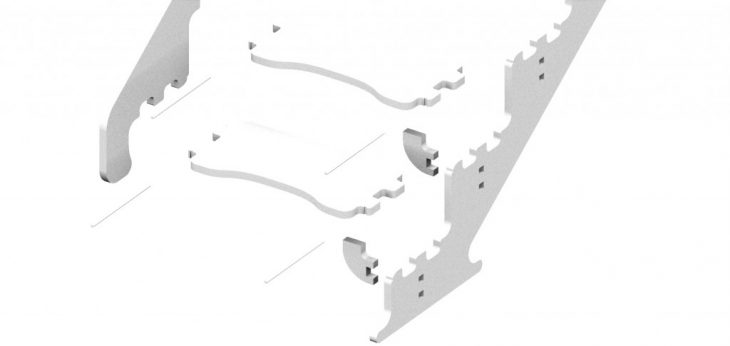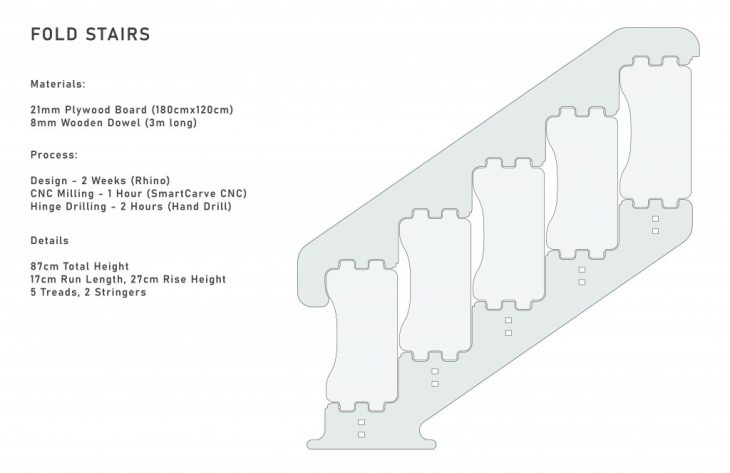</p>
For our prototyping project, Maitri and I decided to work on a folding staircase that could be deployed in a tiny house. We thought would be useful to have a way to get from one floor to another by using as little floor space as possible. We were also interested in developing a model that used the CNC mill and wood that was readily available at the Green Fab Lab. The foldable staircase would be cut from a single sheet of wood and produce as little waste material as possible. Our iterations focused on creating more rigidity when the stair is in the down position, and creating a feasible way to produce the joints and interlocking parts without using expensive machine tools.
The final model featured a completely curved shape, which reduced the cut time in the CNC Mill. This also gave the product a look that could only have come from a robotically controlled cutting process. Our cut file was nested as much as possible, which the design helped with. We also added horizontal supports to help transfer the loads off of the joints and onto the stringers.

One of our previous iterations featured a segmented stringer. Each piece was glued to a main stringer, which allowed us to drill without obstruction. This was one of the main drivers of the changes in the final model.


